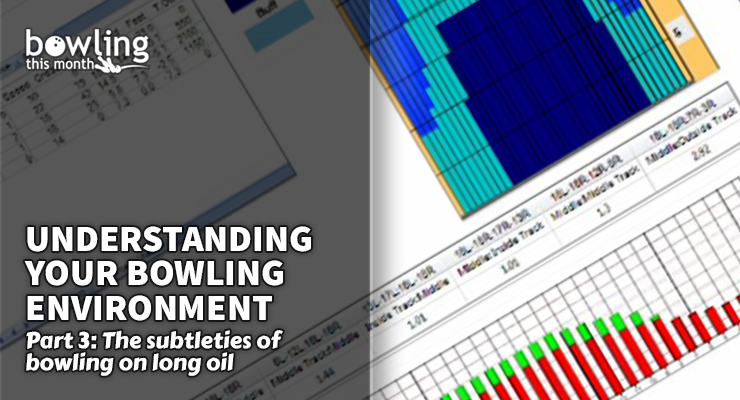So far in this series, we’ve introduced oil pattern variables and discussed some of the nuances of house shots, and then taken a deep dive into short oil. This time around, we’ll be looking at longer oil patterns. With strategies that aren’t quite as defined as short patterns, long oil environments do provide some interesting variety while still giving bowlers a fairly specific starting point to develop their game plans.
One thing that’s important to consider before starting is this: let go of your preconceived notions about long oil. For many of you, what you think in your mind is not what’s actually happening on the lanes. All lane play comes down to solving the problem in front of you, and misperceptions about long oil often make the job harder than it should be.
It’s also important to consider that, unlike most short patterns and some medium patterns, lefthanded bowlers will have very different long oil strategies compared to righthanded bowlers, particularly as the lanes break down. Armed with this foresight, it makes sense that lefties would also use a different strategy on the fresh to not leave themselves in no man’s land once the righties start to ruin their laydown point, which they almost always eventually do.
Defining long patterns
Long oil is often defined simply as anything greater than 42 feet of oil. 43 feet? Yep. 52 feet? Also yep. While medium patterns have a very specific range between long and short, and short patterns are limited by an unspoken practical minimum of about 33 feet, long oil has a much wider range of lengths available. This can and does affect strategy, especially when you consider the “Rule of 31,” which states that the ball’s board position as it exits the oil pattern should be the pattern length in feet minus 31.
Once you go past a certain length, the Rule of 31 math simply no longer works because the exit point and the closely related breakpoint would make it impossible to hit the pocket if the ball hooks normally. For example, a 50-foot pattern would ...
This article is only available to Bowling This Month subscribers. Click below to get instant access to this article and all of our other premium instructional content.
Subscribe to Bowling This Month
Already a Bowling This Month subscriber? Click here to log in.
